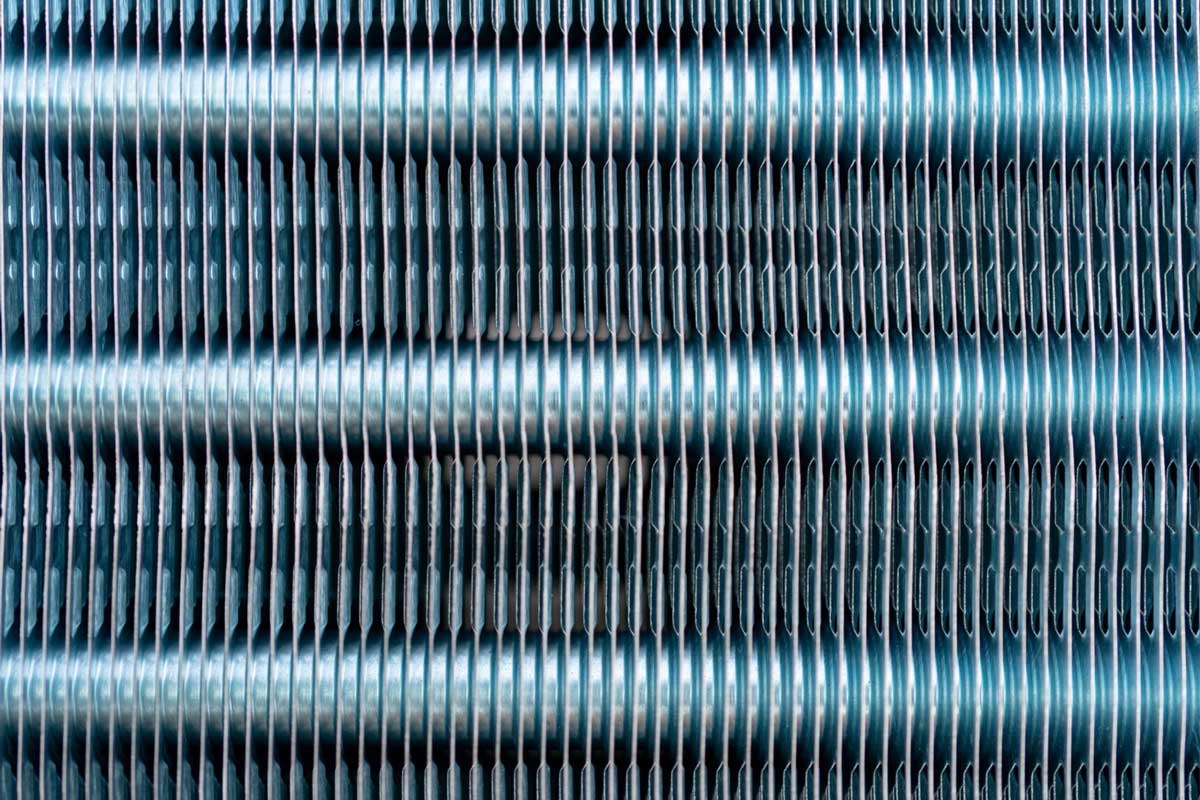When you’re AC system isn’t working at full capacity, there are many potential culprits that could be causing the problems. Two possible suspects are the evaporator coil and condenser coils. Most homeowners in Calgary aren’t sure which coil is which or what they do, but we’ve created an in-depth guide to help you tell the difference.
How Does an Evaporator Coil Work?
The evaporator coil is found in the plenum in the indoor conditioner unit. An evaporator coil is made of copper in closed U loops. Some designs have vanes and fins to increase air-cooling efficiency.
The coil extracts heat from the indoors and supplies it outdoors. The principle defies the common notion that AC systems ‘supply cool’ to your house.
The coolant passes through an expansion valve that lowers the pressure of the refrigerant, converting it into a gas. Copper conducts the latent heat from your house and passes it into the coolant. As the coolant passes through the tubes, it dissipates heat to the outside.
After the refrigerant passes through the evaporator coil, it moves through the conduit to the condenser. The compressor converts the coolant from gas to liquid in the second half of the split system.
Common Evaporator Problems
The evaporator is in the indoor unit. Despite the shielding from external dangers, the evaporator coils still encounter snags that detract from the quality of air cooling. Some common problems to be aware of include:
The copper tubes corrode as harsh chemicals in the refrigerant course through them. Such corrosions cause microscopic holes that breed refrigerant leaks.
Moss, mildew, and mold can grow inside the plenum. The plenum is scantily lit and forms a breeding spot for biological hazards. The growth can block airflow inside the evaporator unit.
Dust layers act as insulators retarding heat absorption efficiency. Dust can also pile on the coils and fins overtime despite the air blowing over the coils.
How Does the Condenser Coil Work?
As the name suggests, the condenser condenses the gaseous refrigerant to liquid. It is part of the outdoor unit with the compressor. The coolant moves from the evaporator coils into the compressor, increasing the pressure.
As the pressure peaks, the refrigerant releases heat into the air. The fan handles blow over the condenser coils into the atmosphere. As a result, the refrigerant returns to a liquid state and flows into the evaporator through an orifice.
Common Condenser Problems
Split systems use the dual combination to impart cooling in your home. The condenser coils face common problems impacting their efficiency, such as:
- Dirt and natural debris in the outdoor unit block the condenser coils. The outdoor unit is particularly susceptible to exhaust fumes that insulate the tubes.
- Rust and corrosion in the pipes disrupt heat dissipation.
Condenser and Evaporator Upkeep
It is essential to run regular checkups on your evaporator and condenser coils as a homeowner. The two heat exchange systems work hand in hand to cool and heat your home. Complications in either of the systems impact the other.
Good airflow is pivotal for your AC to work. Check the fins for any yard of debris or films of dust and use a stiff brush or cloth to wipe it. If the air conditioner is clean but has poor airflow, check the frost layers.
Ice build-up signifies an underlying problem in the tubes. There could be a diet pile inside or a vent blockage that causes frosting on the fins.
You can be proactive in managing your AC. During winter, build wooden panels around the outdoor unit. Your neighbor may use plastic wrappings. But in the long run, they are detrimental. Plastics keep in the moisture, which lowers heat loss rates from the condenser coils.
Is It Time to Maintain Your Air Conditioning System?
Only a certified HVAC expert can tell. Ensure you don’t let quacks handle your split systems. Regularly maintaining your cooling and heating unit is the key to long-term service.
Let Us Do the Job for You
The differences between condenser and evaporator coils will dictate the kind of care you should be giving your air conditioning unit. ClearView Services provides reliable HVAC services to keep your air conditioner in sound shape.
Reach out today to maintain the unparalleled efficiency of your split systems. Our customer-centric solutions are tailored to meet your air conditioning needs.






